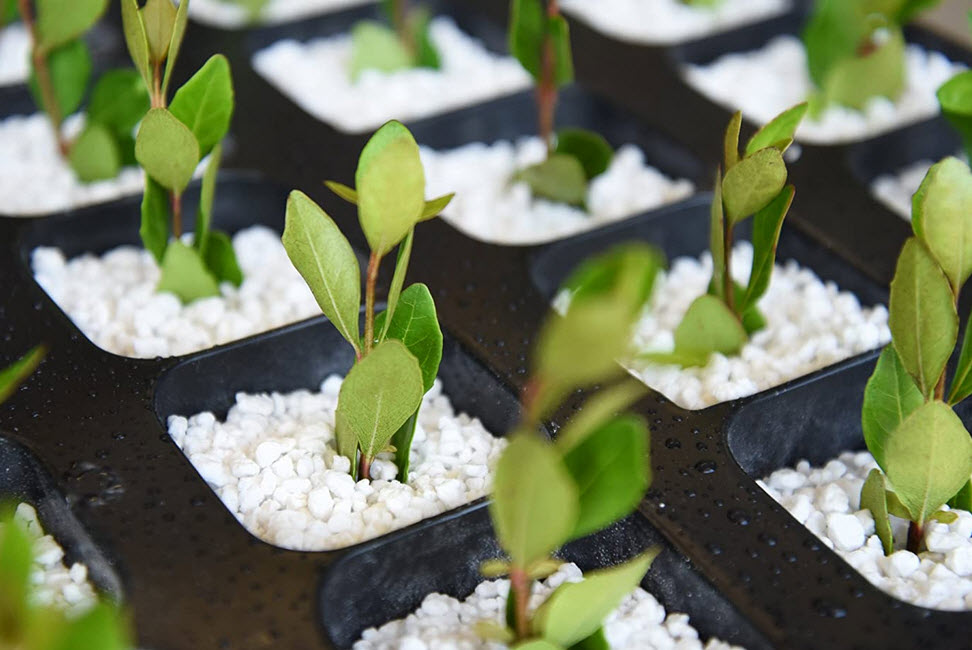Best Hydroponic Growing Medium
by Kevin
Can't decide on the type of growing medium to use in your home made hydroponic system? Fear no more, because the following article will explain how to pick the bad media from the good media and make a final choice that you'll be satisfied with.
What's the Best Hydroponic Growing Medium?

Two different trends have developed in regards of home made hydroponic systems over the past few centuries: those that try to simulate the conditions that a plant has in soil, enhancing the positive aspects and eliminating the negative ones and those that steer completely off soil and try to grow plants in a totally new environment.
The latter includes systems such as the water culture or aeroponics, where the roots of the plants are suspended directly into water, or in the case of aeroponics, in mid air.
On the other hand, home made hydroponic systems simulating the soil will use a type of growth media for this purpose and it's these that we'll focus on today.
Also called aggregate culture home made hydroponic systems, these work on the principle that the best environment to grow a plant in is still its natural one (or a close simulation of it).
Obviously, plants growing in soil have to face a lot of troubles…high alkalinity or high acidity levels in soil, the numerous pests, worms and viruses that will attack the roots via the ground, or lack of one or more of the essential factors of plant life: light, temperature, nutrients and humidity.
Every one of these factors are artificially created and tuned in to the perfect parameters, so that they provide the plant with the best growing environment it could possibly have.
Hydroponic light systems take the place of sunlight, pH level adjustments simulate the perfect alkalinity/acidity ratio, thermostats provide the plant with the perfect temperature and so forth.
Similarly, growth media simulates the soil, but as you will soon see, unlike soil, growth media is virtually flawless.
The growing medium of a home made hydroponic system has 4 major roles:
- to protect the roots
- to regulate flooding/draining
- to regulate aeration
- to absorb moisture
Whatever growth media you'll be using, you will want to make sure that it doesn't:
- influence the chemicals in the nutrient solution
- influence the pH level of the nutrient solution
- hinder the roots from expanding naturally
Now, there are hundreds of different types of growing medium used in home made hydroponic systems and let's face it, you won't have time to look after each one's characteristics and compare them to get the best one. But that's not even necessary, since several types of growth media have risen from the crowd over the passing of time, such as:
Rockwool
Rockwool - this is a sterile and nondegradable growing medium that comes into small blocks of melted granite. It has good moisture absorbing characteristics but at the same time, it doesn't retain any nutrients, allowing them to slip by and reach their destination.
Although relatively new on the growth media scene, Rockwool is quickly establishing itself as one of the best in its class.
Perlite
Perlite - another favorite in home made hydroponic systems, perlite is probably the most common growth media used up to date. Perlite is a mix of various minerals that were expanded under extreme heats, which allows the perlite blocks to be very good moisture holders.
LECA
LECA - LECA stands for Lightweight Expanded Clay Aggregate and is also known as simply "expanded clay" in hydroponic gardening circles. As the name suggests, the main ingredient in LECA is clay, which is pulled through extreme heats in order for it to expand and increase its porous levels.
LECA is great for securing your plant's stability, because it's heavier than many other growing medium, but light enough to be easily handled.
Thoughts on "Best Hydroponic Growing Medium"
 |
 |
 |
 |
Hydroponics Tips